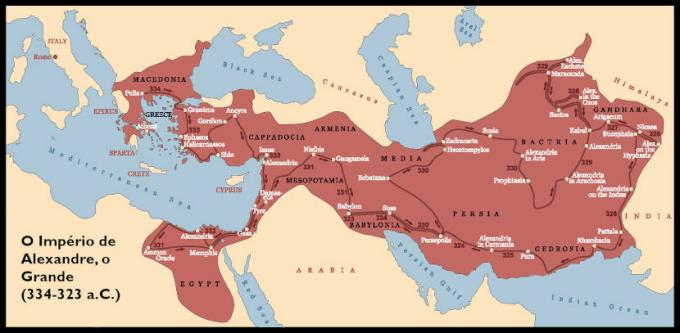THE medieval city has gone through numerous changes since its emergence with the end of the Western Roman Empire and the process of population retreat and ruralization of Europe until its growth after the eleventh century, when there was the development of new crafts and crafts. business.
Emergence of the Medieval City
The Roman Empire had a high urban development with trade routes, which supplied the needs of the urban population, and the large population that inhabited the cities. The city in Western Europe has undergone major changes with the end of the Western Roman Empire and early Middle Ages.
there was a big migration of people from cities to rural areas as a result of the famine, epidemics and violence that marked the decay of the Roman Empire. This process was accelerated by arrival of the Germanic peoples, who came from Northern Europe in search of new lands to settle.
the arrival of germanic peoples it brought violence because, after invading the interior of the Empire, they attacked the production centers and sacked the cities they conquered. By attacking production centers, the Germans directly affected the supply of cities, as many farms were destroyed and others were abandoned by peasants, who feared for their lives.
The interruption of production affected trade routes and cities soon ran out of food supplies. So, there was hunger and the development of epidemics, what caused great mortality. In addition violence of the Germanic attacks brought panic to the people, who fled to protect themselves.
The medieval city emerged from the emptying of ancient Roman cities. The medieval world was, therefore, a world ruralized where the majority of the population lived in the zonesrural areas.
development and growth
In the following centuries (9th and 10th century), the looting carried out by other peoples, such as the Normans and the Hungarians, caused many cities to seek protection through the construction of walls. This gave the city a bigger safety, but also brought problems related to hygiene.
As food production increased and the supply of cities improved, the urban population grew. The increase in production was due to the development of the plow (a tool that allowed a better plow), of the rotation technique, which allowed greater soil yield, and an improvement in the European climate with increased temperature.
With food to spare, they emerged close to cities fairs where people bought numerous goods from merchants. These fairs were gradually incorporated and permanently established in cities.
In addition, the growth of cities generated the need for new craftshandcrafted, that were occupied by people who no longer wanted to survive as peasants. Thus, people made fortunes as the city grew and came to exercise power over the city. With that, there was great urban growth, as is the case of Paris, who owned around 200thousandpopulation in the 13th century.
The new medieval city, developed and more inhabited, suffered a strong impact with the 14th century crisis, when an epidemic of plaguebubonic, a black Plague, acted scathingly on the cities, which still had few practices to maintain hygiene. About a third of the European population died from the disease. The Black Death was contracted by contact with fleas present on rats and arrived in Europe by ships that came from Asia.
By Daniel Neves
Graduated in History


